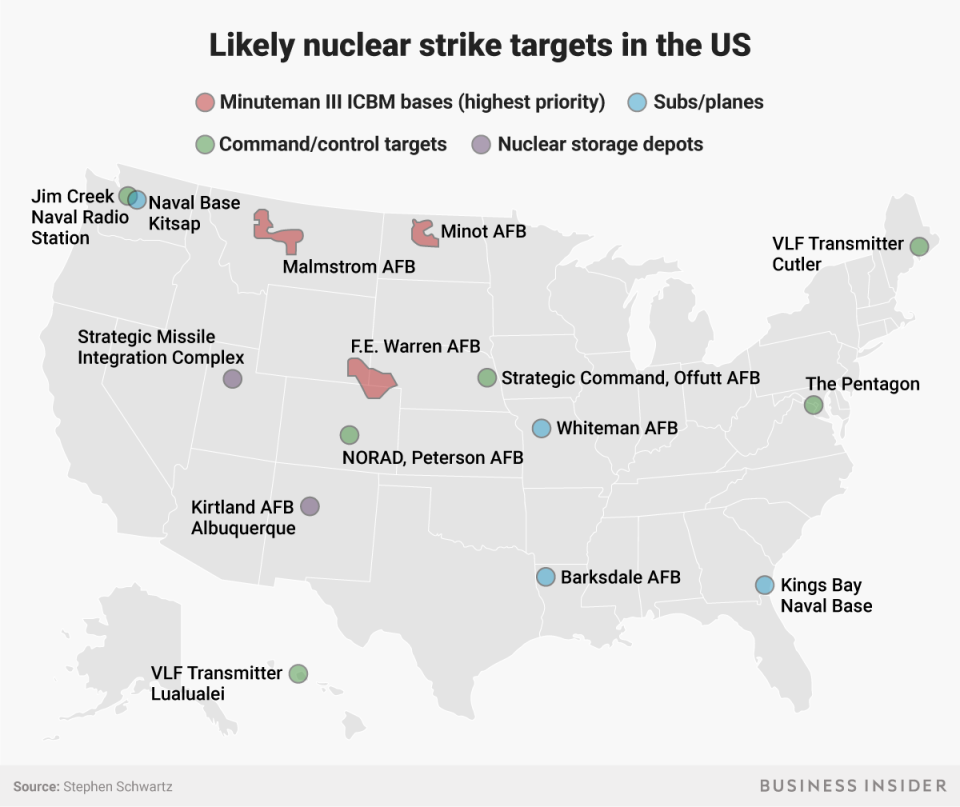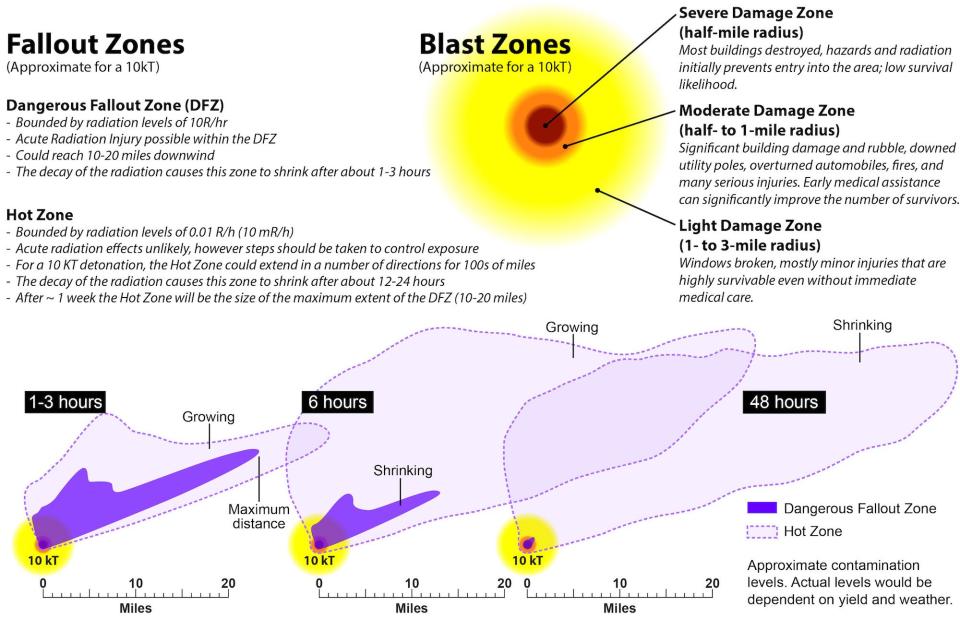Putin just said Russia has 'unstoppable' nukes — here are the areas in the US most likely to be hit in a nuclear attack

Public domain
Russian President Vladimir Putin announced new, supposedly unstoppable nuclear weapons that could hit the US in a matter of minutes.
Putin may be overselling it, but Russia certainly has the nuclear offensive capabilities to destroy much of the US, and there's nothing the US can do to stop it.
Yet the likely targets of a Russian nuclear strike would be counterintuitive, and places like New York and Los Angeles may be spared for more high-value targets in North Dakota or Montana.
Russian President Vladimir Putin said on Thursday that Russia had developed four new "unstoppable" nuclear systems devised specifically to render US missile defenses "useless," and even played animations of launches toward the US.
The systems include an super-fast underwater drone, a nuclear-powered "unlimited" range cruise missile, a new intercontinental ballistic missile with multiple independent warheads, and a hypersonic missile to be fired from jets.
With most everything from the Kremlin, it's best to take their claims with a grain of salt. But one thing is certain, in a full-on nuclear attack from Russia, the US has little chance to defend itself, and millions would die in an instant.
Since the Cold War, the US and Russia have drawn up plans on how to best wage nuclear war against each other — but while large population centers with huge cultural impact may seem like obvious choices, a smarter nuclear attack would focus on countering the enemy's nuclear forces.
So while people in New York City or Los Angeles may see themselves as being in the center of the world, in terms of nuclear-target priorities, they're not as important as states like North Dakota or Montana.
According to Stephen Schwartz, the author of "Atomic Audit: The Costs and Consequences of US Nuclear Weapons Since 1940," as the Cold War progressed and improvements in nuclear weapons and intelligence-collection technologies enabled greater precision in where those weapons were aimed, the emphasis in targeting shifted from cities to nuclear stockpiles and nuclear war-related infrastructure.
This map shows the essential points Russia would have to attack to wipe out the US's nuclear forces, according to Schwartz:

Skye Gould/Business Insider
This map represents targets for an all-out attack on the US's fixed nuclear infrastructure, weapons, and command and control centers — but even a massive strike like this wouldn't guarantee anything.
"It's exceedingly unlikely that such an attack would be fully successful," Schwartz told Business Insider. "There's an enormous amount of variables in pulling off an attack like this flawlessly, and it would have to be flawless. If even a handful of weapons escape, the stuff you missed will be coming back at you."
Even if every single US intercontinental ballistic missile silo, stockpiled nuclear weapon, and nuclear-capable bomber were flattened, US nuclear submarines could — and would — retaliate.
According to Schwartz, at any given time, the US has four to five nuclear-armed submarines "on hard alert, in their patrol areas, awaiting orders for launch."
Even high-ranking officials in the US military don't know where the silent submarines are, and there's no way Russia could chase them all down before they fired back, which Schwartz said could be done in as little as five to 15 minutes.
But a strike on a relatively sparsely populated area could still lead to death and destruction across the US, depending on how the wind blew. That's because of fallout.

Brooke Buddemeier/Lawrence Livermore National Laboratory
The US has strategically positioned the bulk of its nuclear forces, which double as nuclear targets, far from population centers. But if you happen to live next to an ICBM silo, fear not.
There's a "0.0 percent chance" that Russia could hope to survive an act of nuclear aggression against the US, according to Schwartz.
So while we all live under a nuclear "sword of Damocles," Schwartz said, people in big cities like New York and Los Angeles most likely shouldn't worry about being struck by a nuclear weapon.
NOW WATCH: Watch how the US would shoot down an incoming ICBM in its tracks
See Also:

 Yahoo News
Yahoo News 
